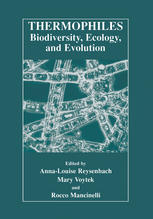

Most ebook files are in PDF format, so you can easily read them using various software such as Foxit Reader or directly on the Google Chrome browser.
Some ebook files are released by publishers in other formats such as .awz, .mobi, .epub, .fb2, etc. You may need to install specific software to read these formats on mobile/PC, such as Calibre.
Please read the tutorial at this link: https://ebookbell.com/faq
We offer FREE conversion to the popular formats you request; however, this may take some time. Therefore, right after payment, please email us, and we will try to provide the service as quickly as possible.
For some exceptional file formats or broken links (if any), please refrain from opening any disputes. Instead, email us first, and we will try to assist within a maximum of 6 hours.
EbookBell Team

0.0
0 reviewsThese are indeed exciting times to be a microbiologist. With one of the buzzwords of the past decade-"Biodiversity," and microbes are reveling in the attention as they represent by far most of the biodiversity on Earth. Microbes can thrive in almost any environment where there is an exploitable energy source, and, as a result, the possible existence of microbial life elsewhere in the solar system has stimulated the imaginations of many. Extremophiles have taken center stage in these investigations, and thermophiles have taken on the lead roles. Consequently, in the past decade there has been a surge of interest and research in the Ecology, Biology, and Biotechnology of microorganisms from thermal environments. Many of the foundations of thermophile research were laid in Yellowstone National Park, primarily by the research of Professor Thomas Brock's laboratory in the late 1960s and early 1970s. The upper temperature for life was debated, the first thermophilic archeum discovered (although it was only later shown to be an archeum by ribosomal cataloging), and the extremes of light, temperature, pH on the physiology of microorga nisms were explored. Interest in thermophiles increased steadily in the 1970s, and with the discovery of deep-sea hydrothermal vents in 1977, thermophilic research began its expo nential explosion. The development of Taq polymerase in the polymerase chain reaction (peR) focused interest on the biotechnological potential of thermophilic microorganisms and on the thermal features in Yellowstone National Park.